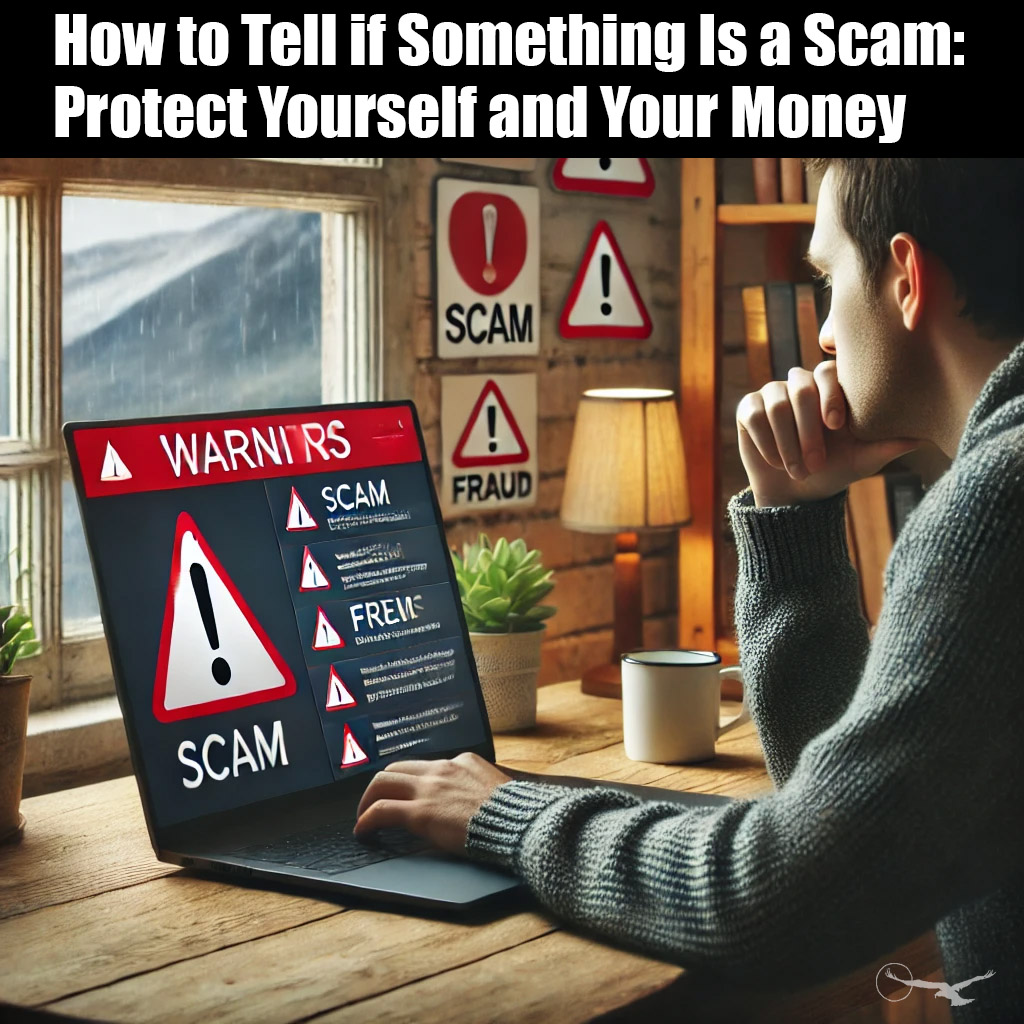These days, scams are everywhere. Whether it’s a phone call, email, text, or even a social media message, scammers are constantly trying to trick you out of your money or personal information. It’s easy to fall into their traps if you’re not careful, but knowing a few red flags can help you avoid becoming a victim. Here’s how to tell if something is a scam and how to protect yourself.
1. Too Good to Be True
We’ve all heard the saying, “If it sounds too good to be true, it probably is.” Scammers use tempting offers like free vacations, huge cash prizes, or incredible discounts to lure you in. These offers are often tied to a request for personal information or a payment upfront. Always be suspicious of deals that seem over-the-top generous.
2. Unsolicited Contact
Did you receive an unexpected call, email, or message from someone claiming you’ve won something or owe money? Be cautious. Scammers often reach out unsolicited, pretending to be from a legitimate organization like the IRS, a bank, or a well-known company. Before you take any action, verify the source by contacting the organization directly using their official website or phone number.
3. Pressure to Act Quickly
One common scam tactic is creating a sense of urgency. Scammers may tell you that you must act now or risk losing money, a prize, or an opportunity. They want to fluster you into making a rash decision. Take a step back, think things through, and don’t let anyone pressure you into immediate action.
4. Requests for Personal Information
Legitimate companies or organizations will never ask for sensitive information like your Social Security number, bank details, or passwords via email or over the phone. If someone is asking for this type of information without a clear reason or verification, it’s a red flag. Never give out personal information unless you’re sure who you’re dealing with.
5. Unusual Payment Requests
Scammers often ask for payment in ways that are hard to trace, such as gift cards, cryptocurrency, or wire transfers. They do this because these payment methods are difficult to reverse, making it harder for you to get your money back if you realize you’ve been scammed. Always be wary if someone asks you to pay using an unconventional method.
6. Poor Grammar and Spelling
Many scams come from overseas, and often you’ll notice strange wording, bad grammar, or awkward phrasing in their communications. Official companies usually take care with their language, so if you see glaring errors, especially in emails or messages that seem to come from a professional organization, it’s worth questioning the legitimacy of the sender.
7. Check the Website and Reviews
If you’re unsure whether an offer or company is legitimate, do some quick research. Check their website for signs of professionalism, such as proper contact information and clear terms of service. You can also search online for reviews or complaints from others who may have encountered the same organization. Websites like the Better Business Bureau (BBB) are great resources for checking the legitimacy of businesses.
8. Trust Your Gut
Lastly, trust your instincts. If something feels off, there’s a good chance it is. Scammers are skilled at manipulating emotions and creating false confidence. If you have any doubts, take a step back and seek advice from a trusted friend or family member. It’s always better to be cautious than to regret falling for a scam.
Conclusion By staying informed and cautious, you can protect yourself from scams. Remember to be skeptical of unsolicited offers, avoid giving out personal information, and take your time making decisions. If you ever feel unsure about something, trust your gut, do your research, and don’t be afraid to walk away from a suspicious offer.






